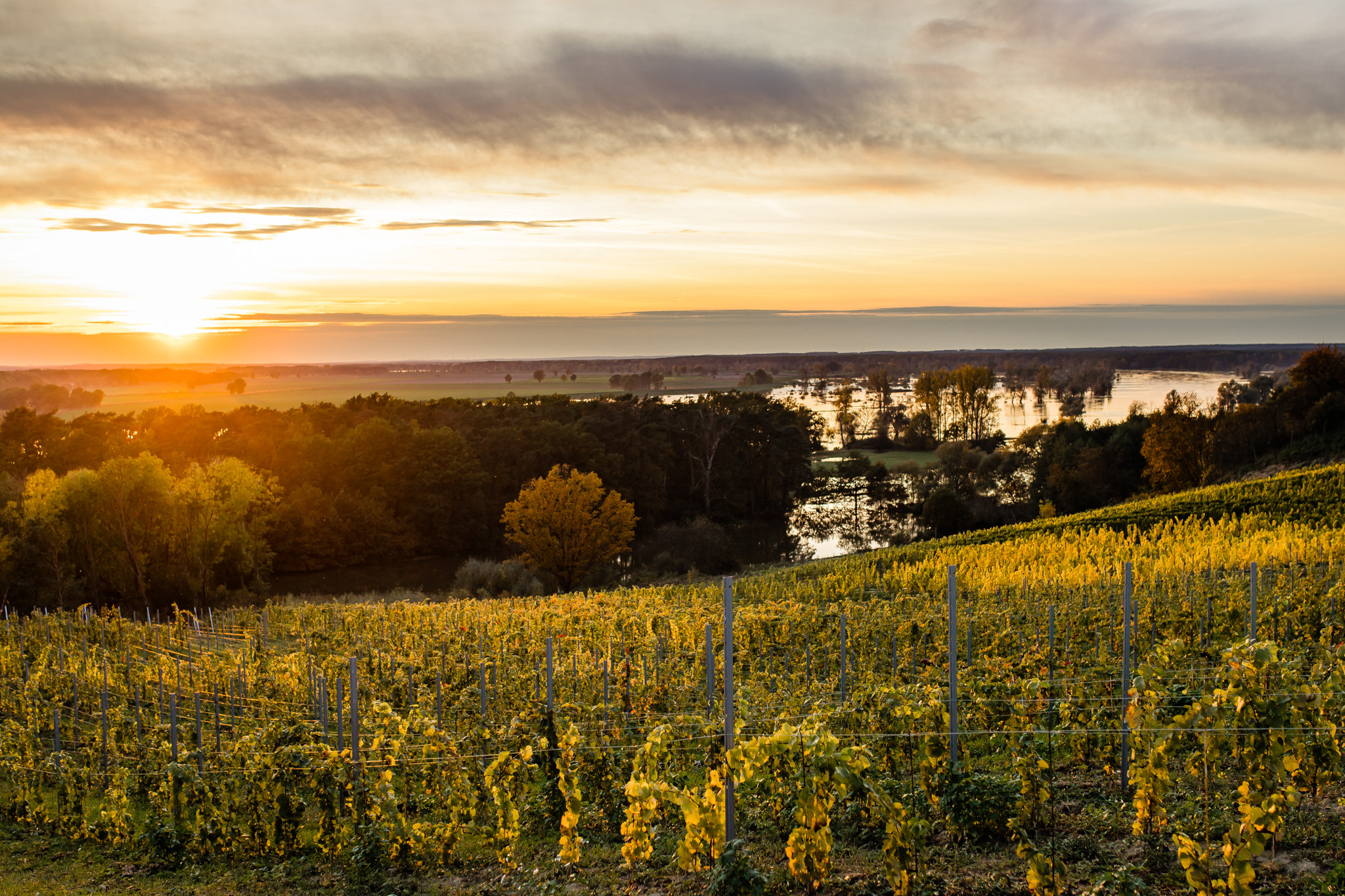
With rolling hills and the picturesque Oder River flowing through, Lubuskie's little slice of paradise is visually stunning and yet another perk of having a glass of red or white to complement your experience of one of Poland's most underrated tourist areas. If you are considering a wine trip in Poland, there is no question - Lubuskie is a must-visit for enotourism. It may seem like a recent market explosion, but the history of what are arguably the best wineries and vineyards in Poland stretches back much further than you'd imagine!
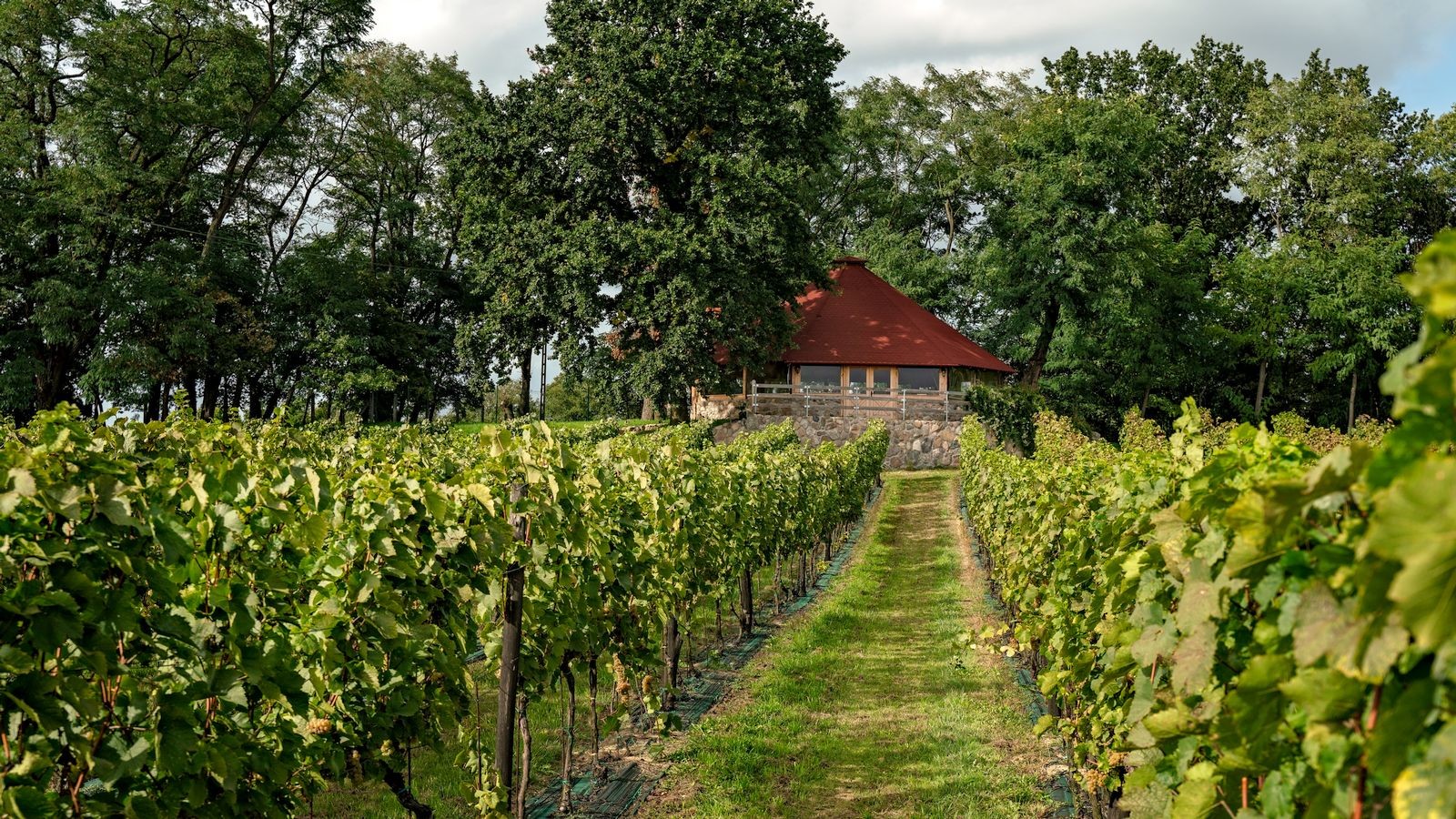
A Quick History of Lubusz & Wine
The name Lubusz comes from Leubuzzi, one of the numerous Slavic tribes that inhabited the area, which also gave its name to the town of Lebus, on the other side of the Oder River in modern-day Germany. From the earliest days of the Polish state, christened in 996CE, the early rulers of the Piast Dynasty were keen to establish a stronghold in the area. However, they weren't budding viticultural entrepreneurs yet. The elevated geography was attractive from a defensive standpoint, though the views didn't hurt their decision either. The Christianisation of Poland and the introduction of certain liturgical requirements led to an increase in demand for wine regionally and undeniably whet the palate of many a layman over the centuries to come. Archaeologists have identified grape pips during garbage forensics in Gniezno, Poznań and Gdańsk from that period, and we know that there was early grapevine cultivation on Wawel Hill in Kraków, (or shall we say 'the original seeds of a now-flourishing Polish industry'). In the 1136 Papal Bull of Gniezno - the earliest written document in the Polish language, two vineyards are mentioned near Płock and Włocławek. As for Lubuskie, Germanic records tell us that grape seedlings were brought here first in 1150 by settlers from Flanders (modern-day Belgium). Four years later, a vineyard was established on the slopes of Krosno Odrzańskie. Winery operations by the knowledgable Cistercian monastic order in Bledzew and Gościkowo probably gave locals a hint or two that the local climate, characterised by mild winters and favourable geography, was perfect for grapevine cultivation! However, it wasn't until the 13th and 14th centuries that Lubuskie's burgher class started producing and selling wine from their own vineyards and really kick-started the regional market.
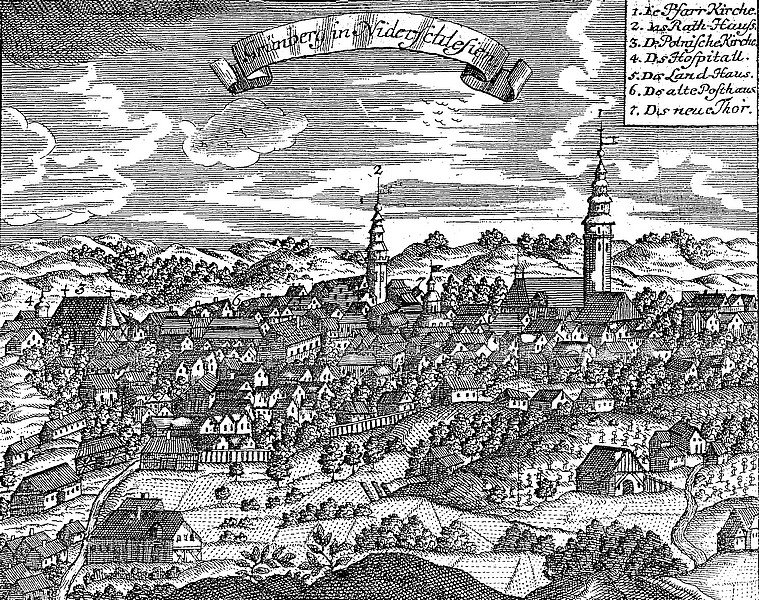
In the bottom right, you can see a small vineyard!
It wasn't all smooth sailing, however. Things seemed dire when the 'little ice age', a general drop in climactic temperature, hit Europe in the 16th century. Extreme frosts were recorded in the winter of 1513-1514 that are said to have destroyed all the vines in the region. War and the shifting of borders between Poland and numerous Germanic Powers also came and went, but generally, the momentum of the Lubuskie wine industry was yet to be halted. The German cultural tradition of Bürgerweinschank, literally translated as the 'Citizens wine bar,' allowed locals to consume alcohol in the public houses outside of the city walls (as opposed to the restricted and heavily regulated beer cellars that operated under the town halls). These were more often located in winery buildings and were marked by a wreath on a pole. Inside, wine was served straight from the barrel. Vintners were doing so well for themselves, that the guild of breweries (ie. the guys who made the amber stuff) banded together to try and stop more vineyards from popping up around Grünberg (now Zielona Góra).
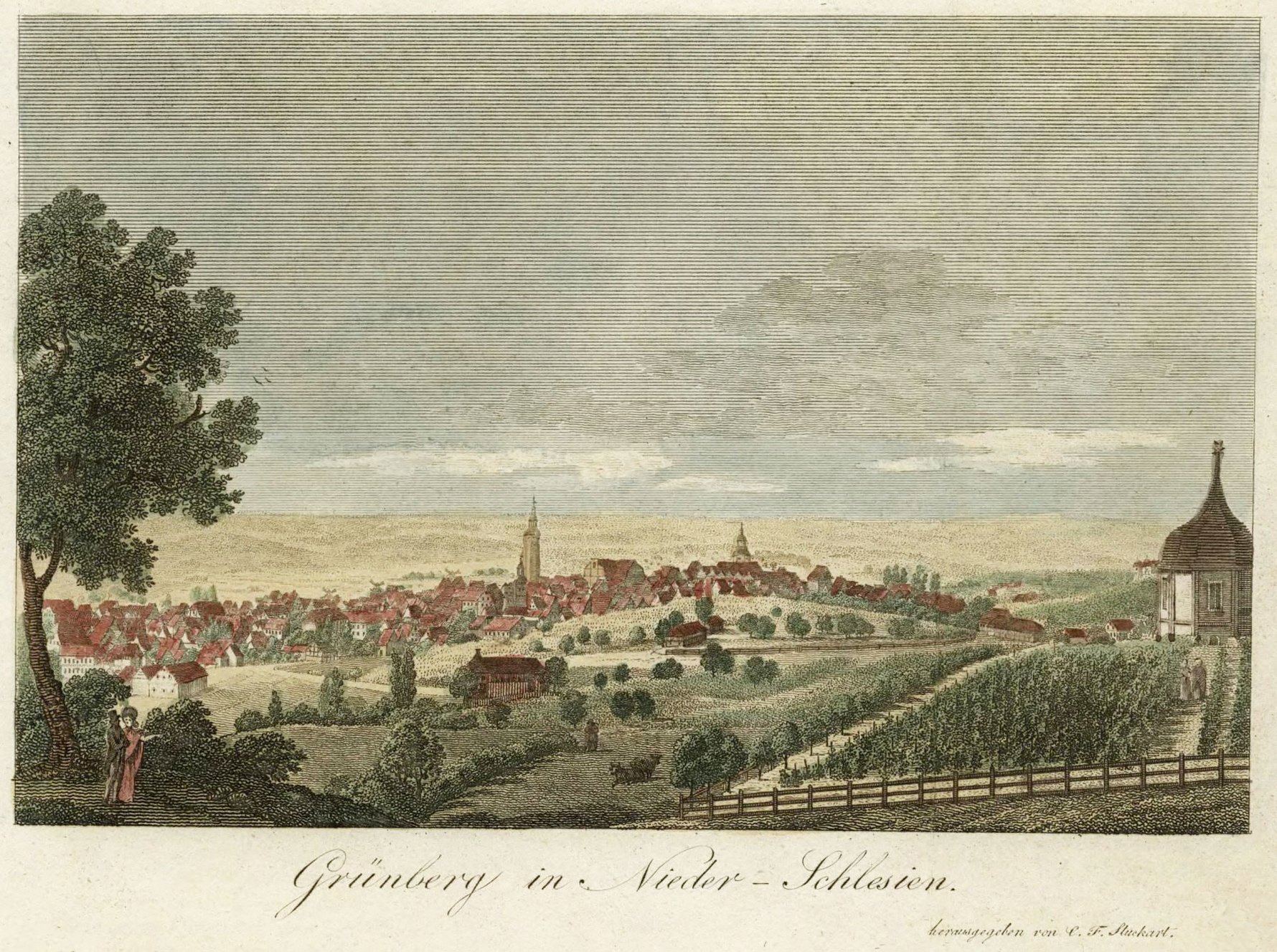
There was no stopping the wine from flowing, however, and the early 18th century recorded the best yields that Lubuskie vineyards had ever experienced. In 1826, the Grempler factory was established in Grünberg and 'Grempler & Co.' became the region's most popular and recognised wine producer. Their varieties of 'sekt' - sparkling white wine - were distributed across Europe and even won awards at world exhibitions in London, Paris and Vienna, firmly establishing bubbly whites as the region's specialty. As the grape phylloxera plague of 1860, also known as the 'Great French Wine Blight', wreaked havoc in most of Europe, Lubuskie wineries were remarkably unaffected; experts have speculated that the region's loam-sand soil never appealed to grape phylloxera aphids, thus they choose to wage their destructive elsewhere. Tax breaks for wineries in the late 19th century helped spur the local wine industry into the 20th century, and Grempler & Co.'s production soared up from 250,000 bottles a year in the 1920s, to 800,000 a year in the early '30s. All was looking well and good...
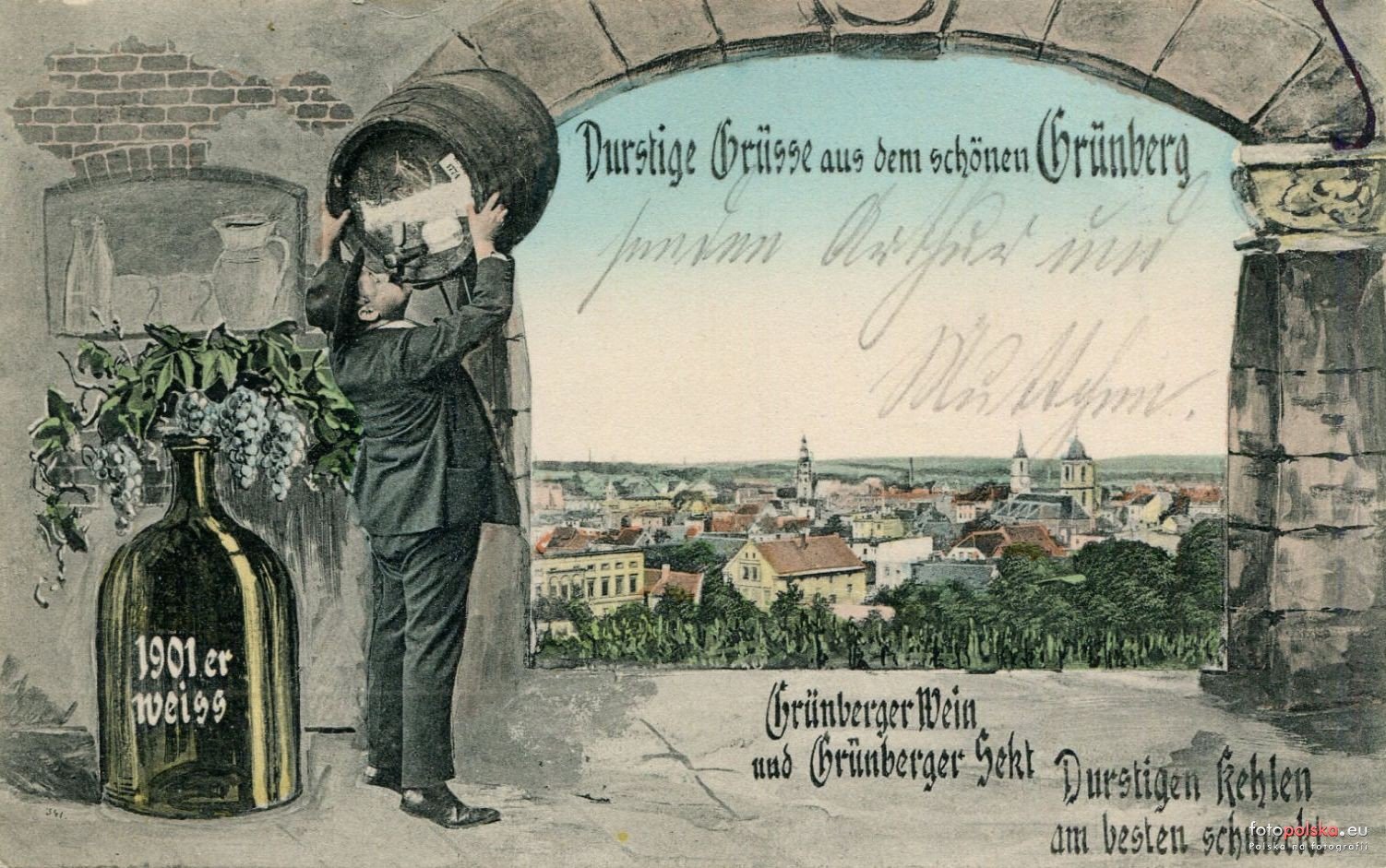
The ebb and flow of different political powers over the centuries has contributed to the fascinating history and cultural diversity of the Lubuskie region, which is, in many ways, how grape cultivation and winemaking found their way here in the first place. Although wars have always been a part European history, few could have predicted how much things would change in the mid-20th century. After the Red Army captured Grünberg on February 14, 1945, the city was renamed Zielona Góra and the eastern Lubusz lands were incorporated into Poland. Before the war, Lubuskie had 150ha of viticultural land to speak of. By the time hostilities had ceased, that number had dropped to 66ha. In October 1945, the Grempler & Co. factory was formally taken over by the new political system and would be renamed numerous times with rather clunky-sounding 'state-owned' titles. Sparkling wines were considered to be a luxury drink of the bourgeoisie and fell out of fashion as they didn't fit the Stalinist ideology of the times. As a result, the former Grempler factory produced generic fruit wines in the postwar era, whilst other nationalised wineries in the region focused on juices and vinegar. The purging of the region's German population in the aftermath of the war also meant that a lot of knowledge about winemaking left with these specialists. All told, the days of small enterprises passionately toiling away with traditional methods in their vineyards and pressing facilities had come to an end.
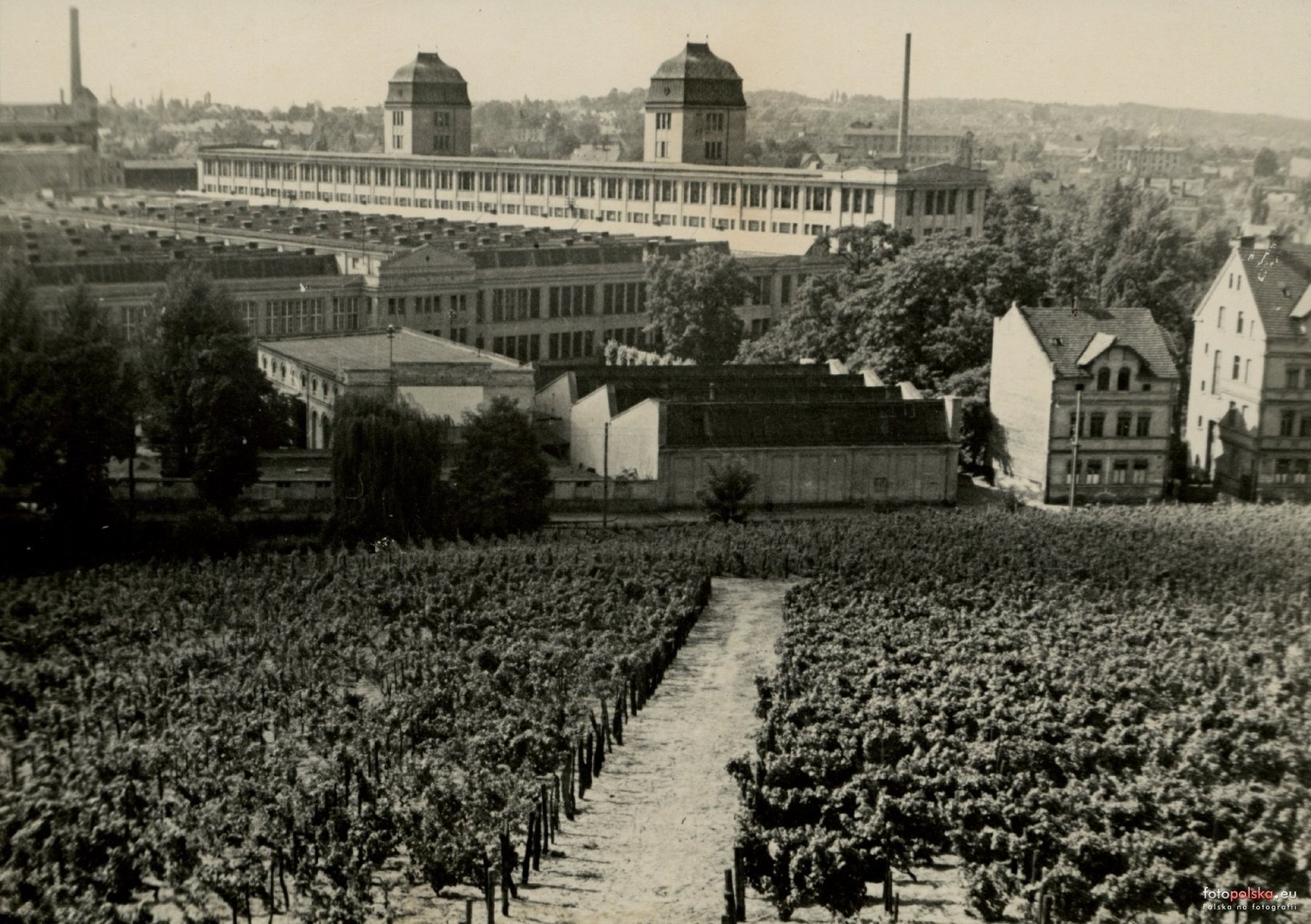
This area is now part of Zielona Góra's Wine Park . Photo: fotopolska.eu
So what would save the Lubuskie wine industry? The Communist system would eventually collapse, with Poland holding the torch of political change in Central and Eastern Europe. The first free elections in half a century were held in 1989 and the country opened up to the west once again. But things didn't change overnight, and even some of the high rollers in the area wouldn't live to see a wine renaissance. The final state-owned iteration of Grempler & Co, last called the Lubuska Wytwórnia Win (ENG: Lubuskie Winery Plant), eventually filed for bankruptcy in 1999. But the locals at ground level had not lost their spark. Unbound by restrictions from communist authorities, grassroots community activities resumed and the Lubuskie Wine Association was established in 1994. Their aim was clear: to revive the wine-growing traditions of the region and promote knowledge about grapevine and wine production. In 2003, the National Association of Wine Growers & Producers was established in Zielona Góra, and Poland's entry into the European Union in 2004 provided even more opportunities for local initiatives, including joint visits and training sessions with German, Czech and Slovakian winemakers. On June 30, 2006, the Zielona Góra Wine Association was established as a result of the merger of the National Association of Wine Growers & Producers and the Lubuskie Wine Association. In 2009, the Association Cultural Community-Lubuskie Vineyards was established. Another organisation of Lubuskie winemakers is the Association for the Promotion of Vineyards & Regional Products, established in 2013. As of today, there are 375 vineyards that can be visited across the Lubuskie region, bragging a total area of almost 627ha!
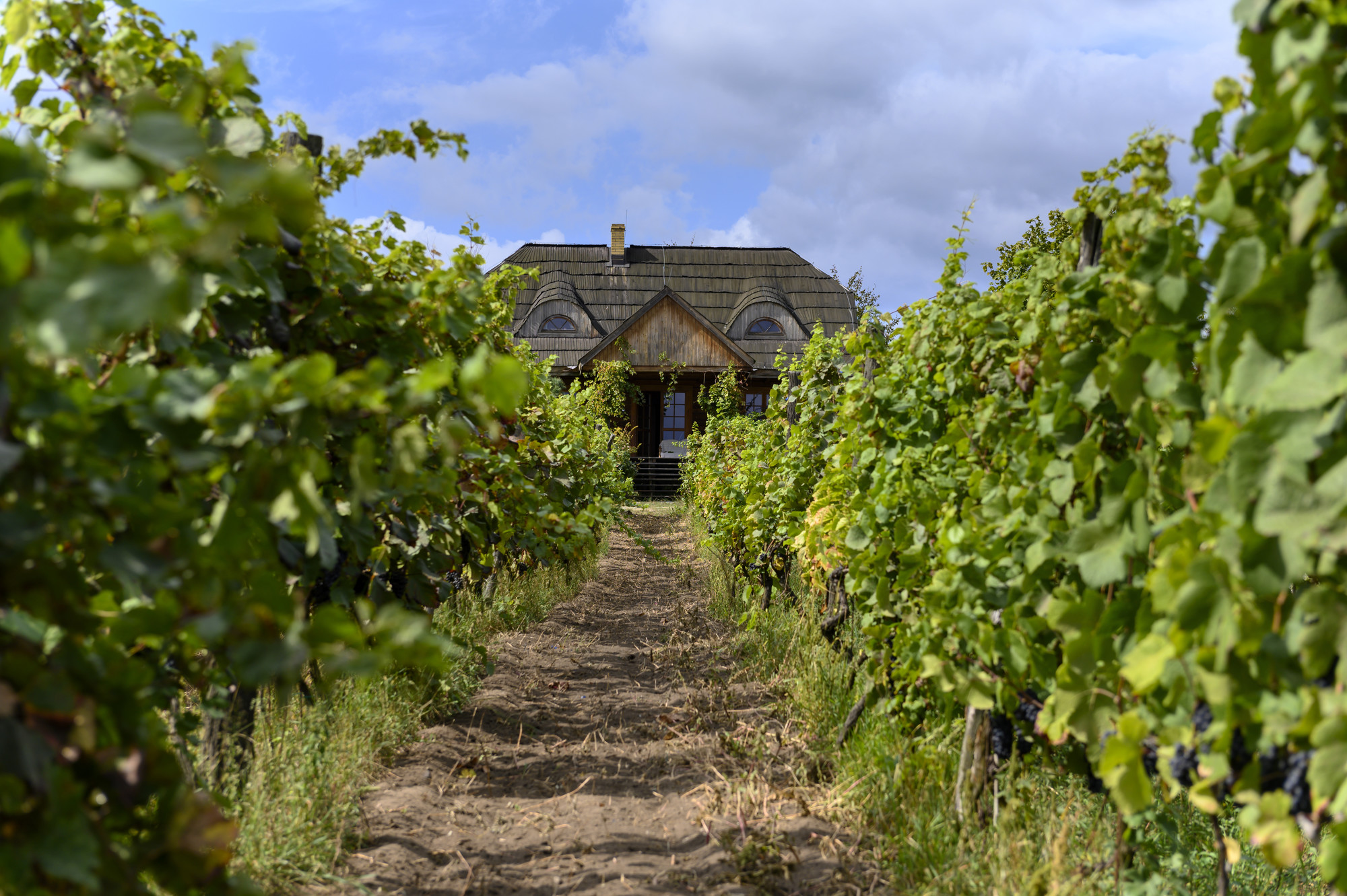
The Lubuskie Wine & Honey Trail
From an enotourism perspective, Lubuskie is an ideal combination of several factors. First and foremost, there is amazing quality wine there, made by dedicated local producers that are willing to share their passion with the world at large. Secondly, the history of Lubusz and its wonderful cities, towns, and the long-standing industrial cultivation of grapevines, have added extra meaning to the spiritual and material heritage of these lands. Thirdly, the backdrop of the Oder River and its company of rolling hills, stunning lakes and rich green forests, make up the serene landscape that tempts even the most demanding of outdoor adventurers. Regional specialists and museologists have worked tirelessly to safeguard the winemaking traditions, in addition to a smaller but no less significant beekeeping industry, by creating exhibition spaces and collecting artefacts that are connected with both. As part of this initiative, Lubuski Szlak Wina i Miodu (ENG: The Lubuskie Wine and Honey Trail) was created in 2006.The trail is designed to introduce tourism to the local producers of traditional products that are made in Lubuskie vineyards and apiaries, first premiering at the 7th Tourism Fair - ZATUR 2008. Visitors who take on this regional pilgrimage are introduced to 50 different landmarks, where winemaking and bee-keeping can be experienced and consumed, both literally and spiritually. Hotels and farmhouses co-operating with winemakers and beekeepers provide accommodation, and additional attractions for visitors include the picturesque forests and lake region with constantly developed tourist facilities around which the trail runs.
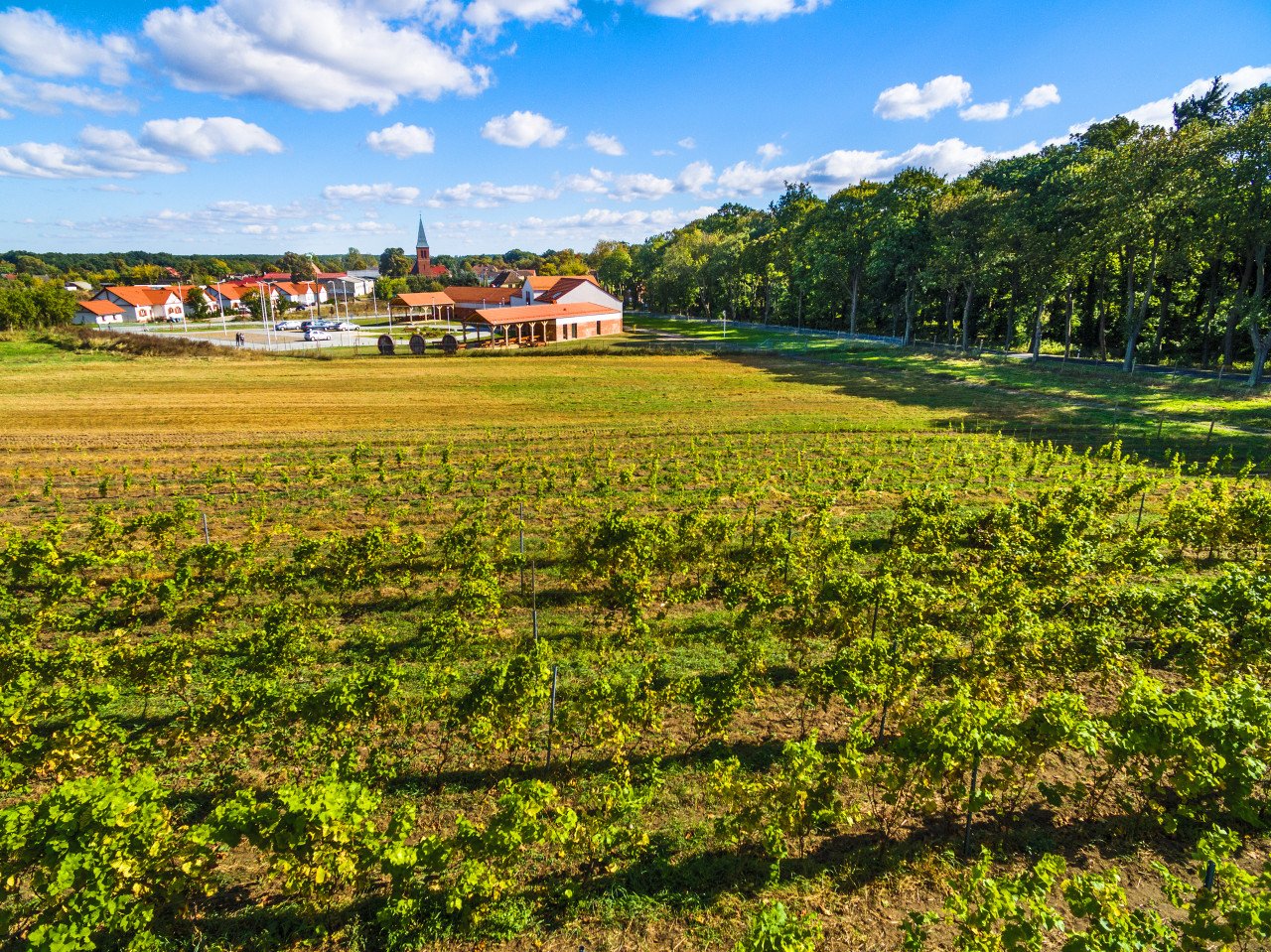
A visit here is an essential part of the 'The Lubuskie Wine and Honey Trail'. Photo by Lubuskie Wine Centre.
Wine in Zielona Góra, the City of Bacchus
There's a reason why Zielona Góra, literally translated as 'Green Mountain', is the largest city in the Lubuskie region. It's something of a sweet spot for viticulture, thanks to the soil, elevation and southward-facing slopes that give the vineyards an ample amount of sunlight throughout the day. The wine industry has, without a doubt, been a huge factor in its development, and it's a celebrated part of the city's culture. You'll not just find grapevine motifs on cast-iron and old signage dotted around the place, but also a vineyard just east of the historic centre. Wine Park is to Zielona Góra what Central Park is to New York - a leisure spot, unique in the fact that it is also a functioning vineyard.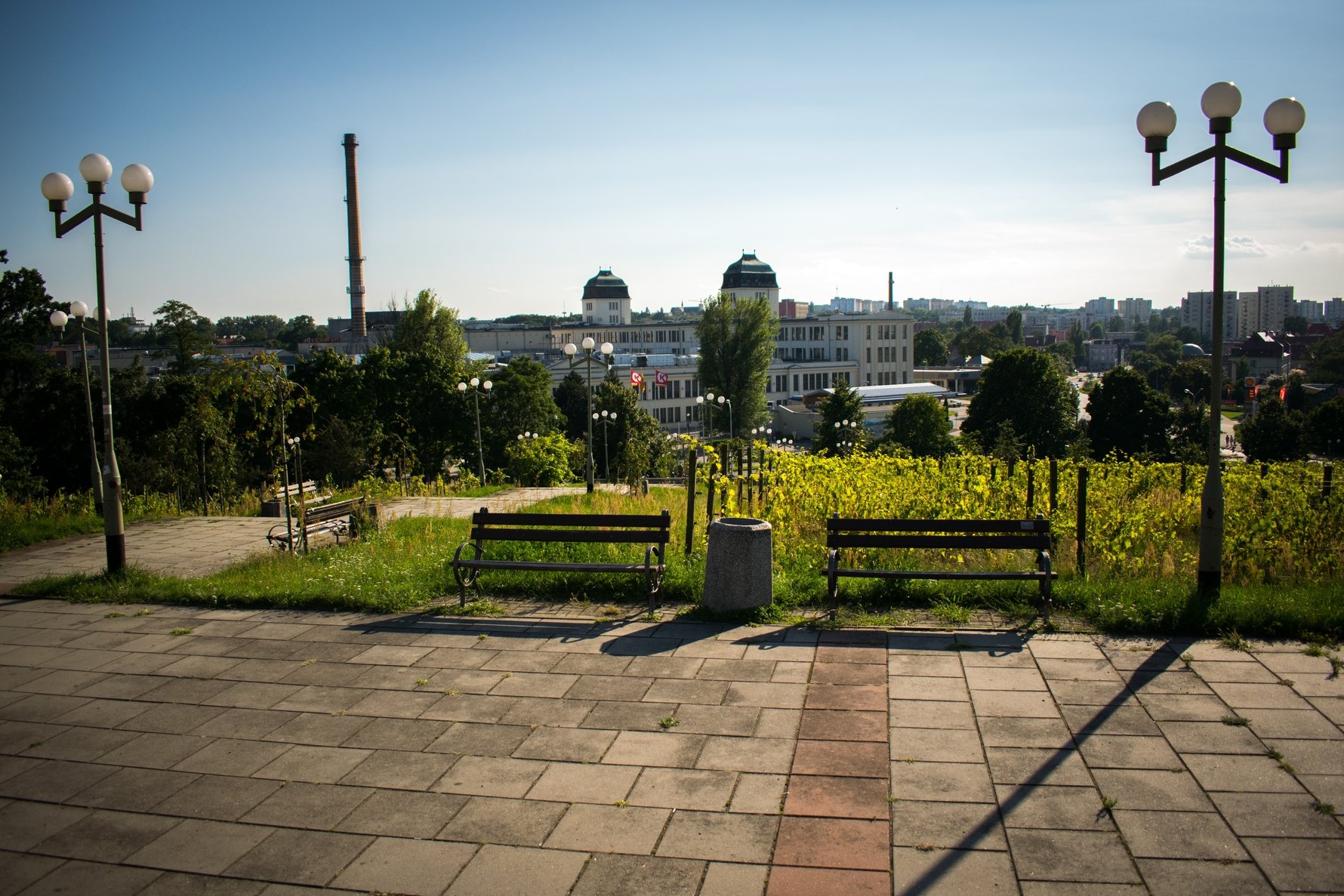
There are also numerous sculptures to be found in a similar vein to the anti-authoritarian gnomes of Wrocław, rabbits of Gniezno and other like-minded initiatives around Poland. In Zielona Góra, the symbolic Roman god of wine, Signore Bacchus, has inspired a small army of its own - The Little Bacchuses! However, these are not the hairy grape-swinging mascots that you may expect. These are much less uniform, with each sculpture possessing its own unique character, and more recent additions to the crew have taken on a female form! If you've dragged your children along on your enotourism excursion, this might be a good way of piquing their interest!
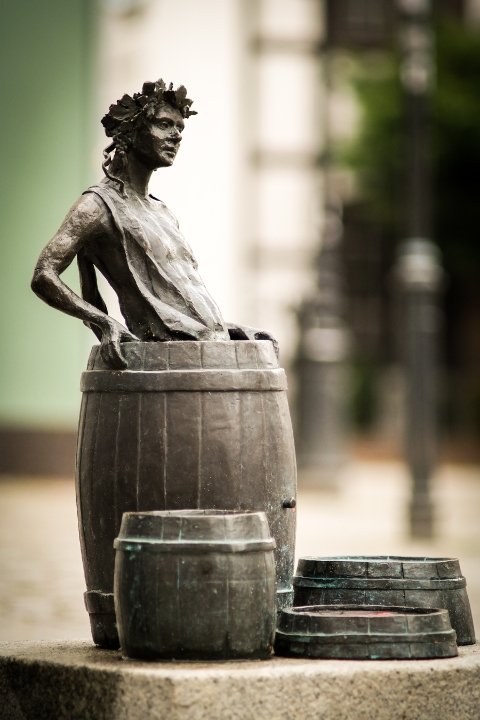
Photo by visitzielonagora.pl. |
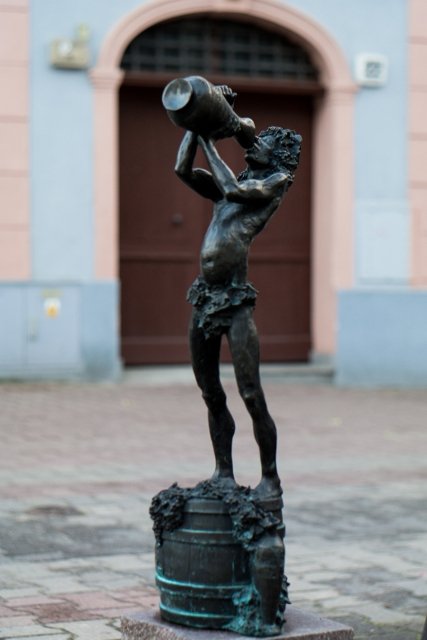
Photo by visitzielonagora.pl. |
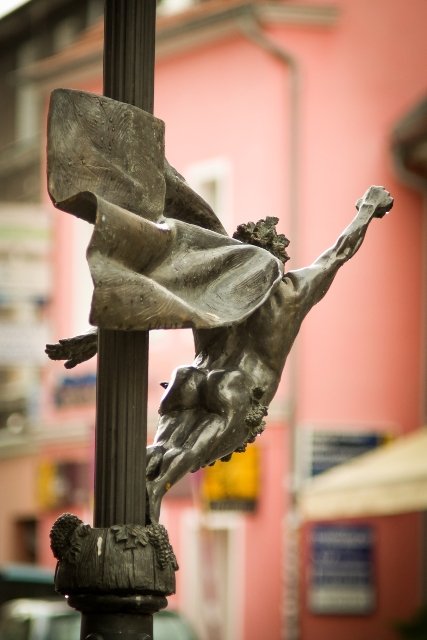
Photo by visitzielonagora.pl. |
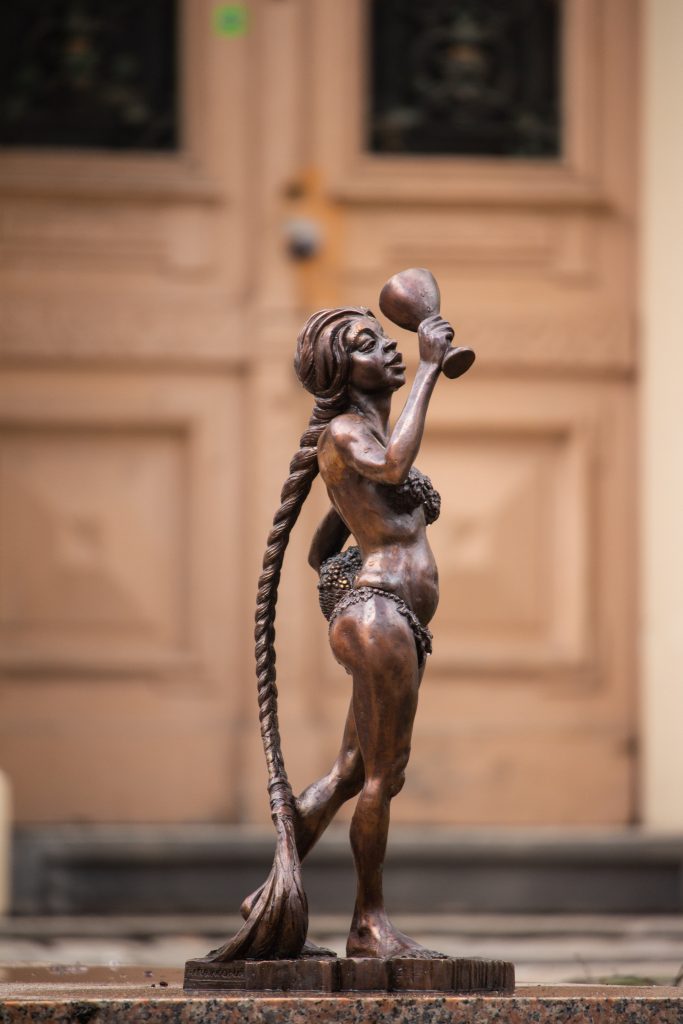
Photo by visitzielonagora.pl. |
Time your visit well and you can also catch one of Zielona Góra's popular wine festivals. Winobranie (ENG: Wine Festival) in early September sees Bacchus getting the keys to the city and thus taking power over it. As part of his mischief, Zielona Góra transforms into a fairground of attractions, concerts, open-air games, sport, as well as cultural and numerous other events. For enotourists, the Wine Festival Fair organised in the pedestrianised centre of town is perhaps the most important; it's here in the 'Wine Town' that springs up around the Town Hall that local winemakers present their products. However, Winobranie is not entirely focused in the city centre. The festival organises 'wine buses' to take visitors out to numerous wineries and vineyards in the local area, allowing you to get personal with Lubuskie winemakers, tour their estates and sample a bit of their output!
For the more casual enotourist and those travelling with children, the Wine Festival Parade may be more to your liking. This tradition dates back to the early 20th century, taking place on the second Saturday of the Wine Festival at noon. With a different theme every year, residents from all walks of life in Zielona Góra strut their stuff in any manner of colourful costume down the main streets of the city. Music and other artistic floats accompany the whole fair, making it the craziest week of a year in Zielona Góra, not to mention the most joyful!
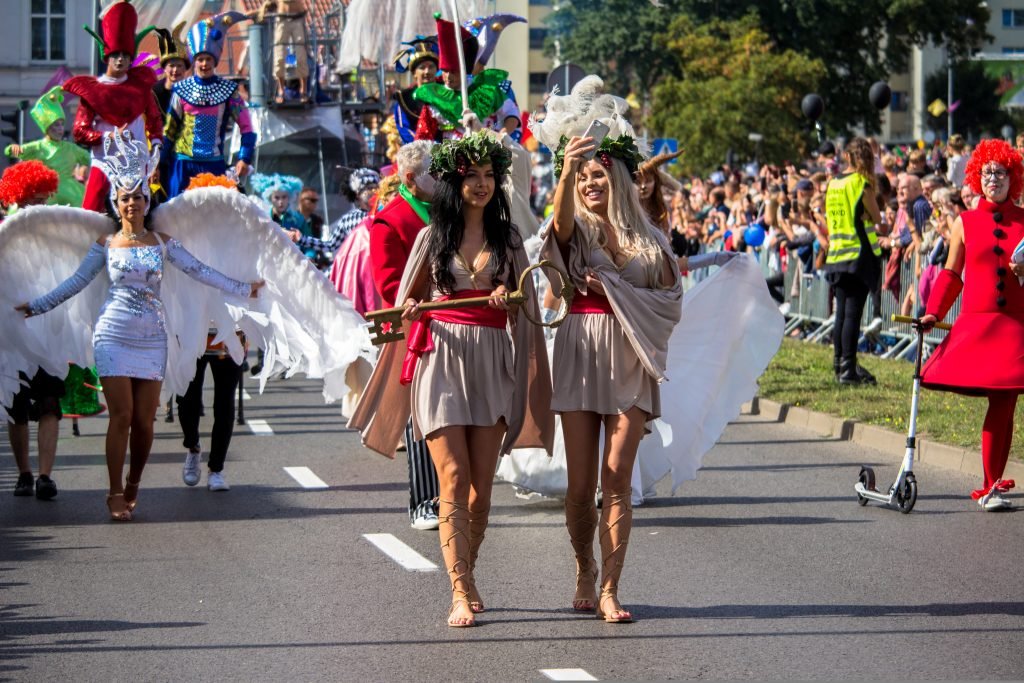
during the Wine Festival Parade at Winobranie. |
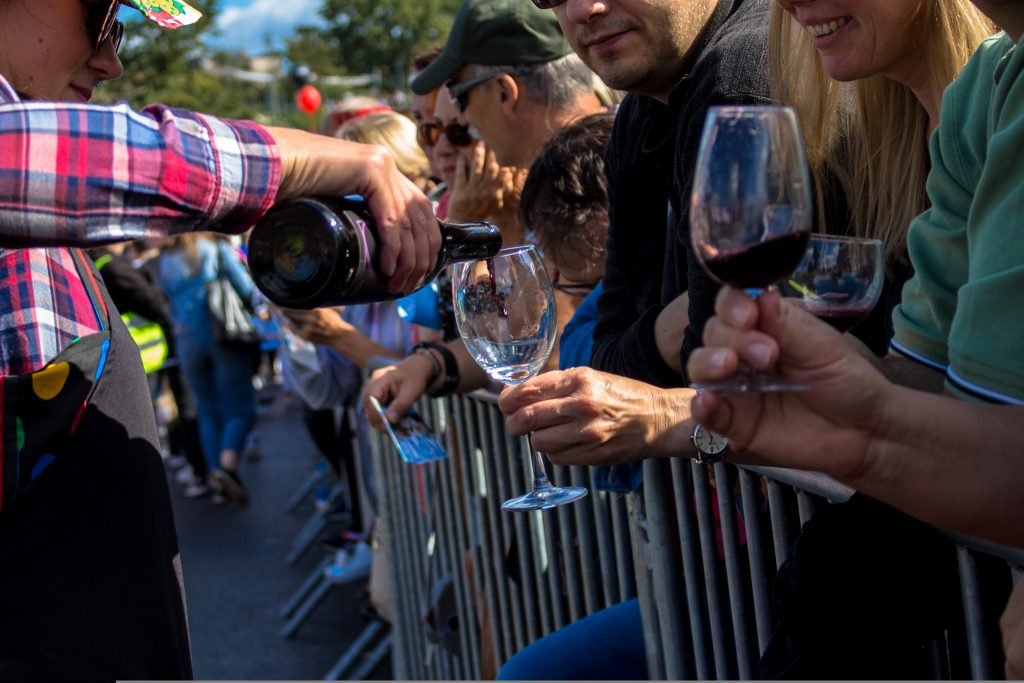
with enthusiastic festival-goers at Winobranie. |
A newcomer to the whole wine festival affair is the Lubuski Festiwal Otwartych Piwnic i Winnic (ENG: Lubuski Festival of Open Cellars and Vineyards) giving more opportunities for enotourists to visit historic wine cellars and taste produce from numerous Lubuskie vineyards. Additional events are held at the Wine Museum, the regional museum of Lubuskie and the Wine Centre in Zabór, as well as tours between key monuments in the city of Zielona Góra.
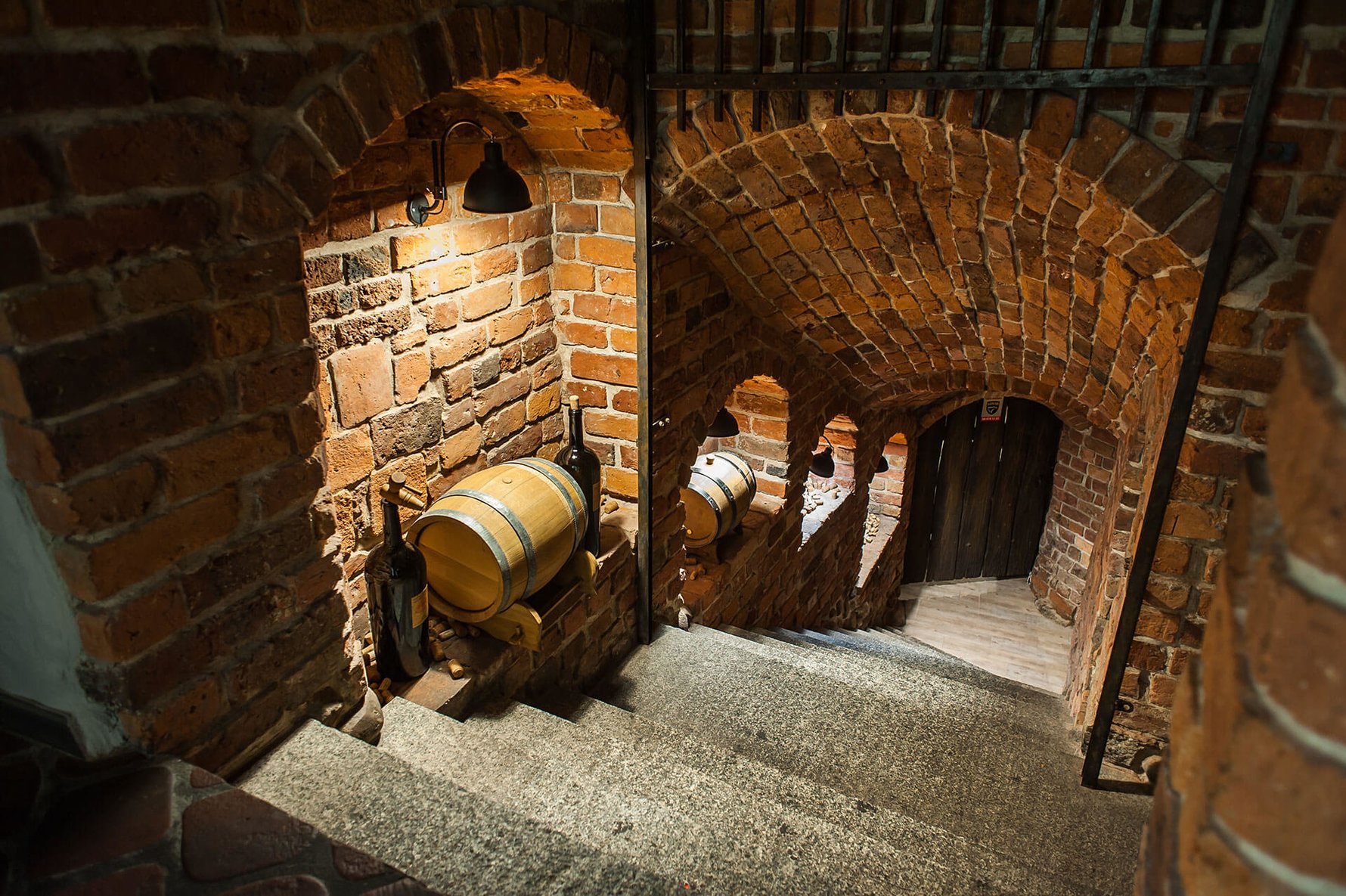
Where do I get started in Lubuskie's wine country?
If you're a budding enotourist keen to visit the region, there are a few things to keep in mind. The majority of places we have listed offer wine tasting options, usually with at least a cheeseboard or some other snacks to complement, and is a great way to get to know the local vintages. However, keep in mind that many of these are small operations, usually run by families with little to no staff, meaning if you decide to arrive unannounced, there may be no one there to assist you. For this reason, PRIOR RESERVATION FOR EVERYTHING IS ESSENTIAL. You should also keep in mind that most of these businesses are not restaurants or bistros, so don't assume you'll be able to order a meal onsite. That being said, catering is certainly an option that the owners can organise for you. Alternatively, stroll into the nearest locality and seek out something else!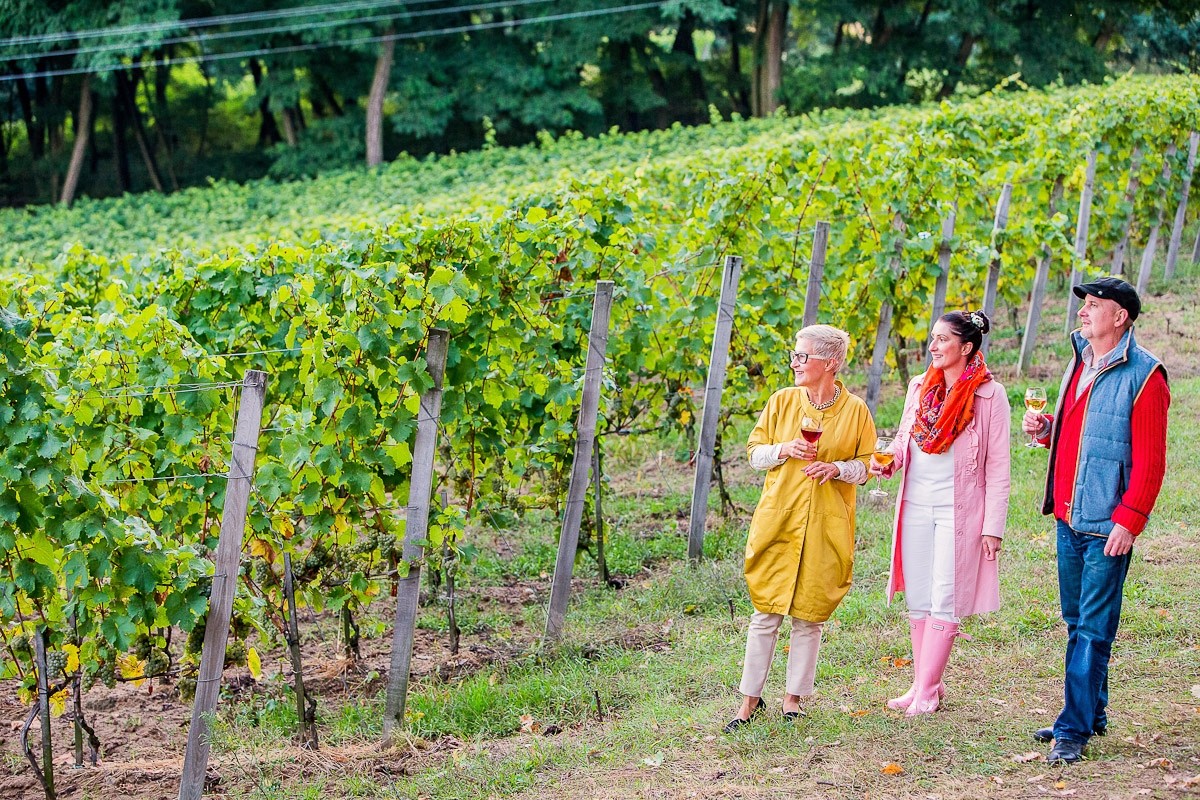
So where do you start? It's highly advised that you make your first stop at the Lubuskie Wine Centre for some orientation. Aside from an exhibition that introduces Lubuskie's viticultural history and other frequent events that take place here, the staff are keen to give you recommendations for estates that produce specific ranges of wine. One such initiative for tourism in the area is the aforementioned Lubuskie Wine & Honey Trail, which will well-and-truly suffice for those looking to immerse themselves in regional wine (in some cases, this is meant quite literally, as you can have a 'wine spa' at the historic palaces of Mierzęcin and Wiechlice!)
Outside of the Wine Centre, the region's largest viticultural estate can be found - the Local Government Vineyard - which is a collective of numerous smaller producers over a 33ha space. Lubuskie's renowned output of traditional sparkling white wine can be sampled at Gostchorze, Krucza and Senator vineyards. There are enviable Oder river views at Hiki, Marcinowice, Margaret, as well as the Wine Terraces Vineyard, and a rustic winery experience can be sought out at Cantina, Marcus, Winnogóra and the often-photographed Miłosz. If you're looking for some accommodation to ease into after a long day of tasting, seek out Old Winna Góra Vineyard , Pszczew Manor, Vineyard Under the Tower or the aforementioned palace estates of Mierzęcin and Wiechlice. One of our personal favourites is the 19th-century Prussian-looking Łukasz vineyard, offering a balance of history, food, a pleasant forest view, animals for the kids and, of course, excellent wine!
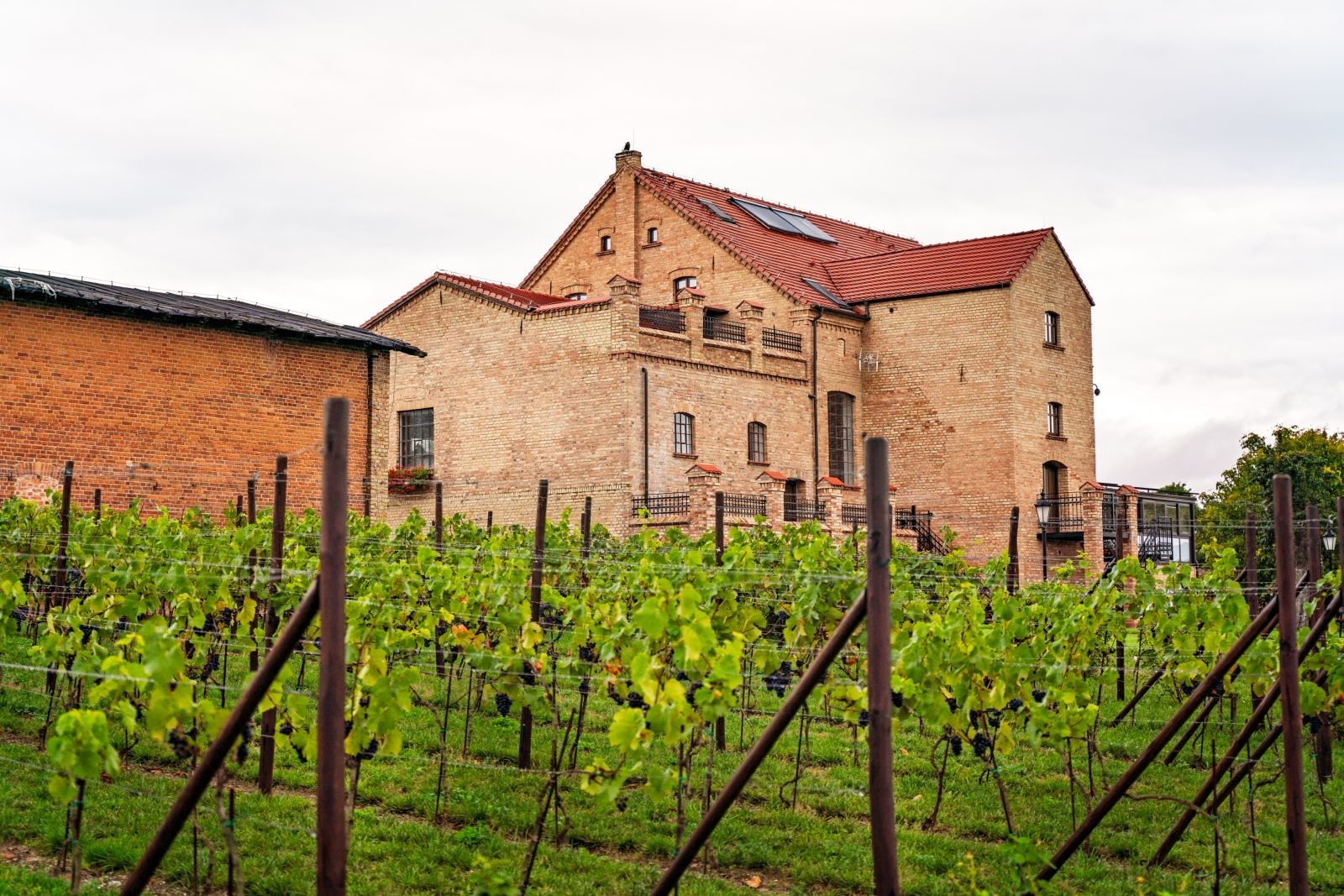
Explore our Lubuskie travel portal and the links below to discover why you should visit Lubuskie and what to do here. Look for our printed Lubuskie Region Map if you’re in the area, or download it here.


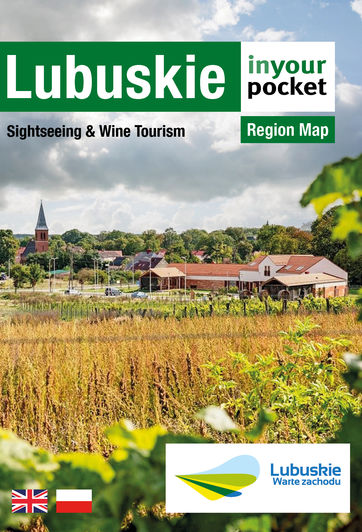
Comments